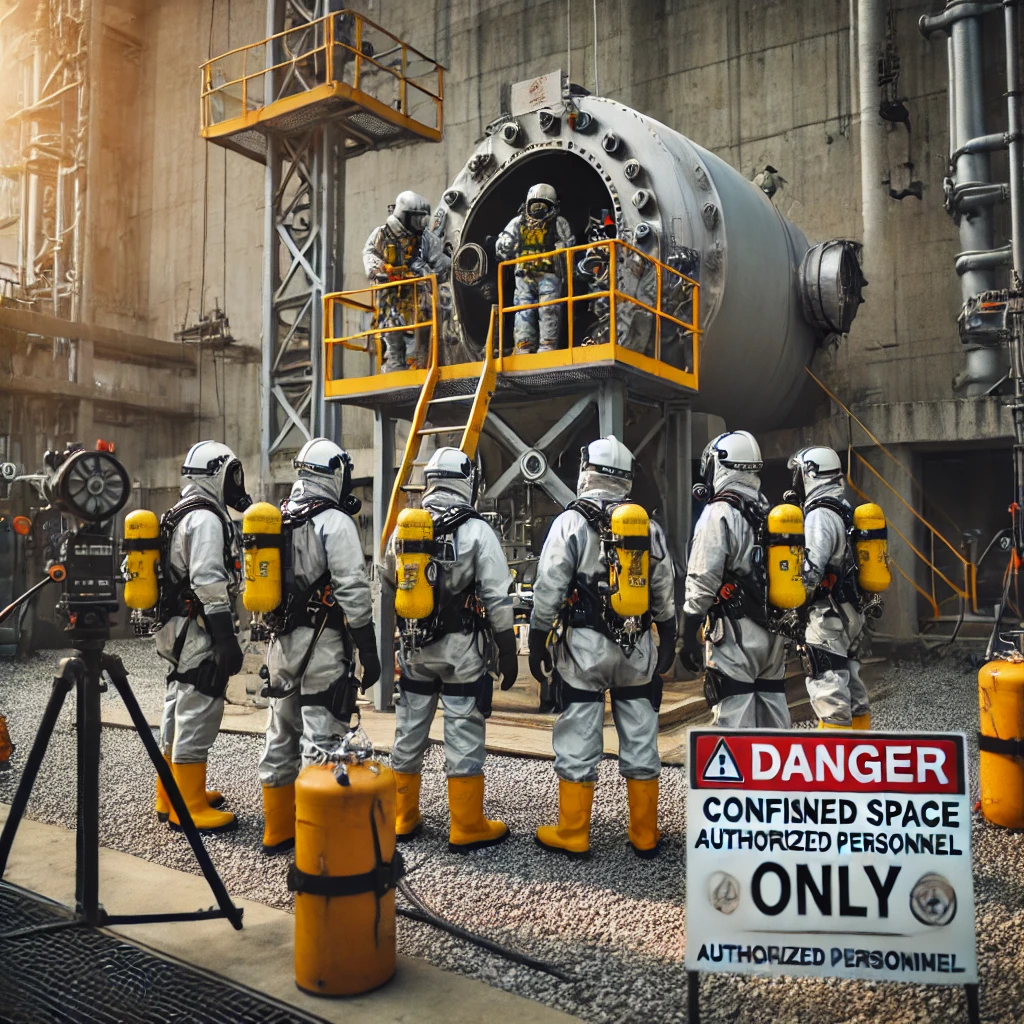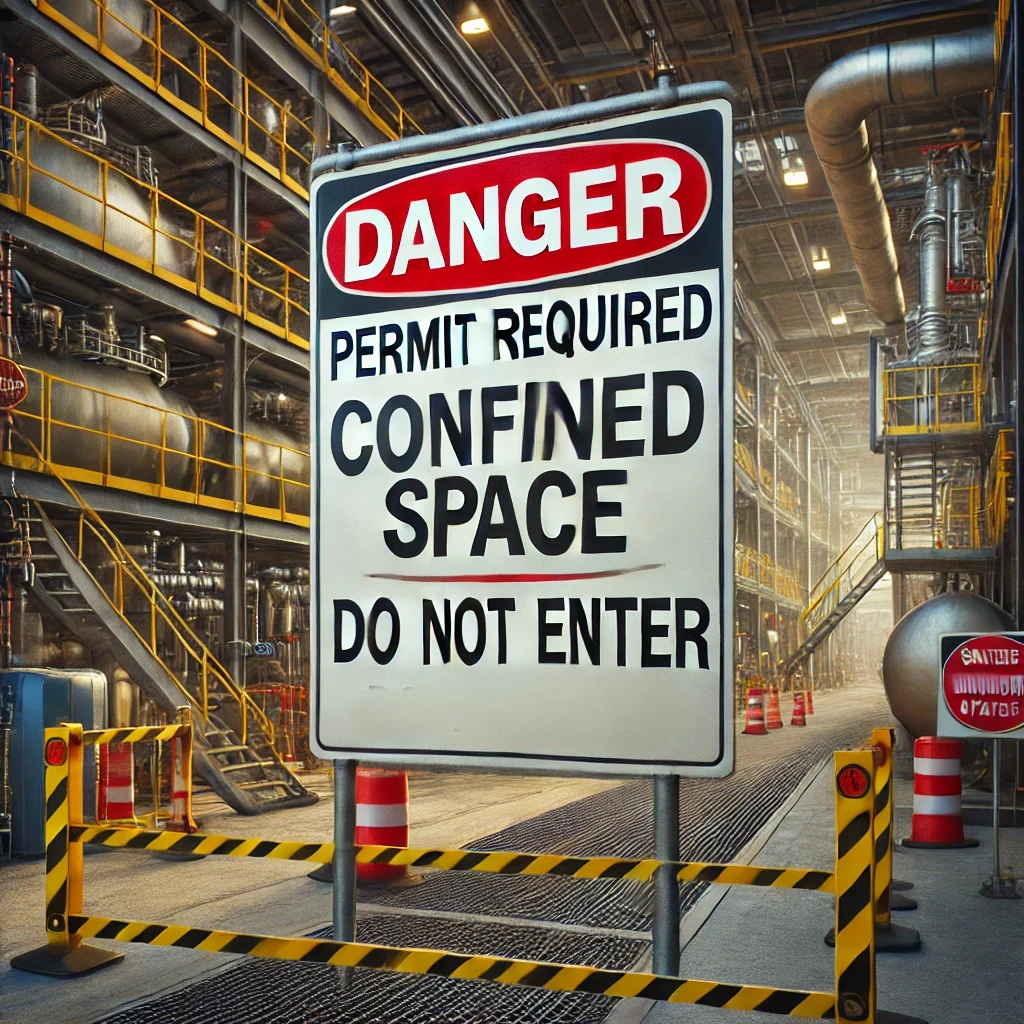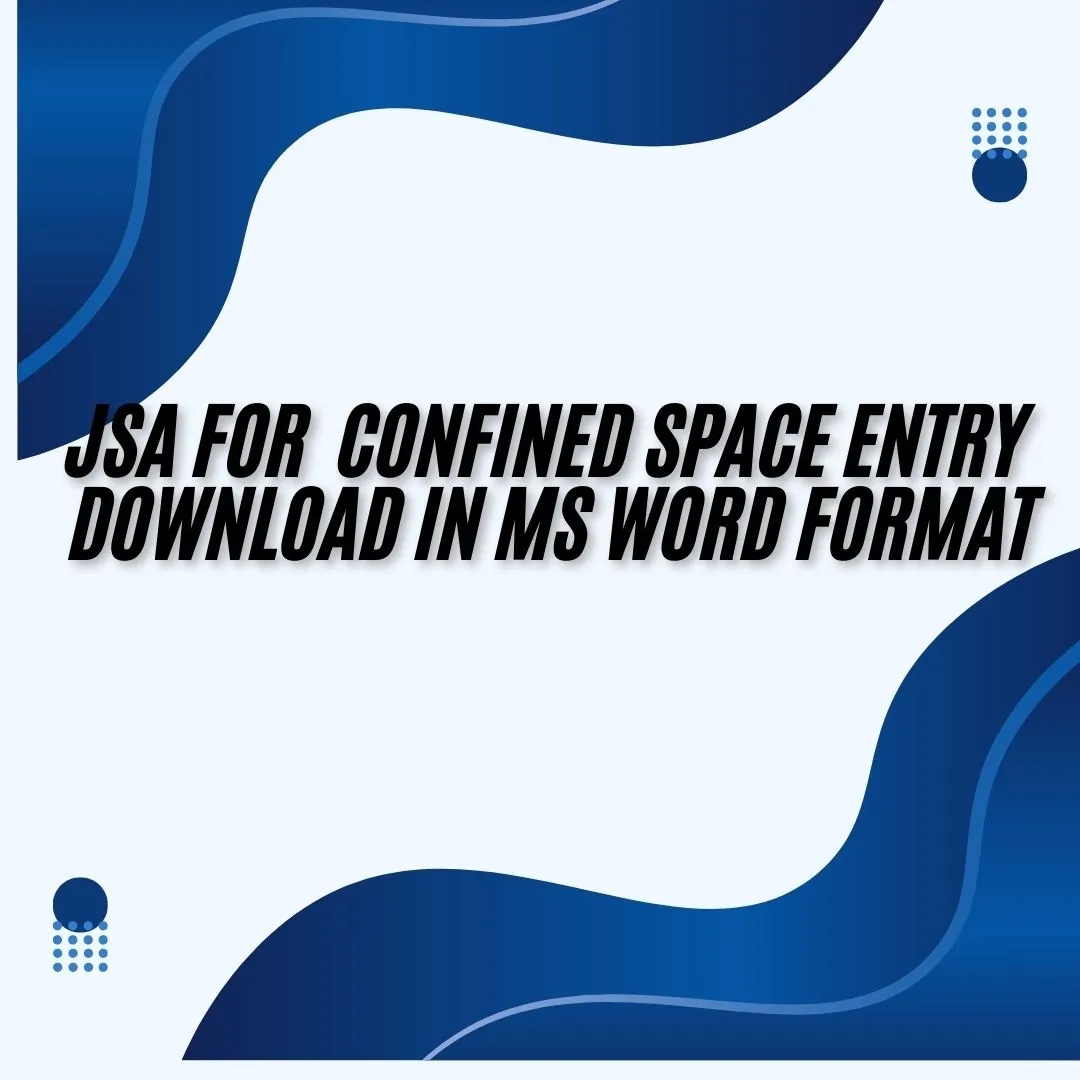Working in confined spaces—one of the most dangerous activities in the workplace—JSA for Confined Space Entry calls for careful planning and close adherence to safety procedures. An important instrument for spotting possible confined space hazards and safety precautions for guard employees is a job safety analysis (JSA). This handbook offers a thorough summary of how to create a successful JSA for limited space access.
Understanding Confined Space Entry
Confined Space designated for limited access and exit points, not intended for continuous occupancy, and maybe posing major hazards to health and safety are confined space. Tanks, silos, pipelines, manholes, and vaults are a few examples.

Key Characteristics of Confined Space:
- Constrained egress or access.
- Inadequate ventilation.
- There are potential risks associated with hazardous atmospheric conditions.
- The hazards include mechanical risks, entrapment, or engulfment.
Common Confined Space Hazards must be covered in Confined Space Entry JSA
Developing a strong JSA starts with spotting limited space hazards. Here are some typical risks:
1. Atmospheric Risks
- There is either oxygen enrichment or shortage.
- Poisonous gases include carbon monoxide and hydrogen sulfide.
- These are volatile, flammable gases or vapors.
2. Physical dangers
- There is a risk of engulfment by loose objects, including liquid, sand, or grain.
- A sloping floor or an inwardly converging wall can cause entrapment.
- There could be falling objects or structural collapse.
3. Environmental risks
- The high temperatures are causing heat strain.
- Inadequate sight.
- Noise levels triggering communication difficulties or hearing damage.
4. Equipment and Mechanical Hazards
- Shifting components in a machine.
- There could be electric shocks from machinery or exposed wire.
- Hazardous energy sources can start unexpectedly.
Developing a JSA for Confined Space Entry
Developing a successful JSA calls for several important phases:
First: Evaluate the employment tasks.
Divide the work among separate chores. Entering a storage tank, for instance, can call for chores including pre-entry inspection, atmospheric condition monitoring, and maintenance work.
Second step: Name hazards.
Review every chore, looking for possible hazards. As for:
- Pre-entry inspection: Risk of residual dangerous gas exposure.
- Activities involving maintenance run the risk of electric shock or entrapment.
Third step: Apply control mechanisms.
Once you identify hazards, develop control strategies to reduce risks. Among these are:
Engineering controls refer to:
- Make sure enough ventilation removes dangerous gases.
- Put up barriers to stop illegal access.
- In flammable surroundings, use explosion-proof lights.
Administrative Checks:
- Give employees limited space entry training.
- Create and enforce a permit-to-work system.
- Create a crisis reaction strategy.
Personal Protective Tools (PPE):
- For poisonous fumes, use respirators.
- When called for, use fall protection gear.
- Provide flame-resistant apparel to employees.
Step 4: Train and Speak
Make sure every employee is aware of the risks, counteractions, and emergency protocols. Maintaining safety awareness calls for both regular training and toolbox talks.
Step Five: Track and Examine
Track the limited space constantly for varying conditions. Review and update the JSA often to consider changes in working practices or new hazards.

Best Practices for Confined Space Hazards and Control Measures
Use these best practices to reduce hazards during confined space entry:
- Perform atmospheric testing.
Before admission, test for flammable vapors, toxic gases, and oxygen levels.
Use continuous monitoring tools to instantly identify changes. - Airflow:
Keep safe atmospheric conditions using mechanical ventilation.
In flammable surroundings, steer clear of using tools that create sparks. - Permission for entrance:
Use a permission-to-work system to record and approve access.
Make sure permits outline safety precautions, type of work, and length of employment. - Emergency readiness:
Create a rescue plan including equipped personnel and required tools.
Frequent drills help ensure readiness. - Control and Communication:
Put in charge of limited space operations is a qualified supervisor.
Keep constant contact with employees internally by means of communication tools.
Download JSA For Confined Space Entry in MS Word
Protecting workers from possible hazards requires a well-prepared job safety analysis for confined space entry. Employers can guarantee compliance with safety rules and promote a safe working environment by spotting limited space hazards and putting sensible control strategies into use. Recall that the keys to avoiding confined space-related events are preparation, instruction, and awareness.

